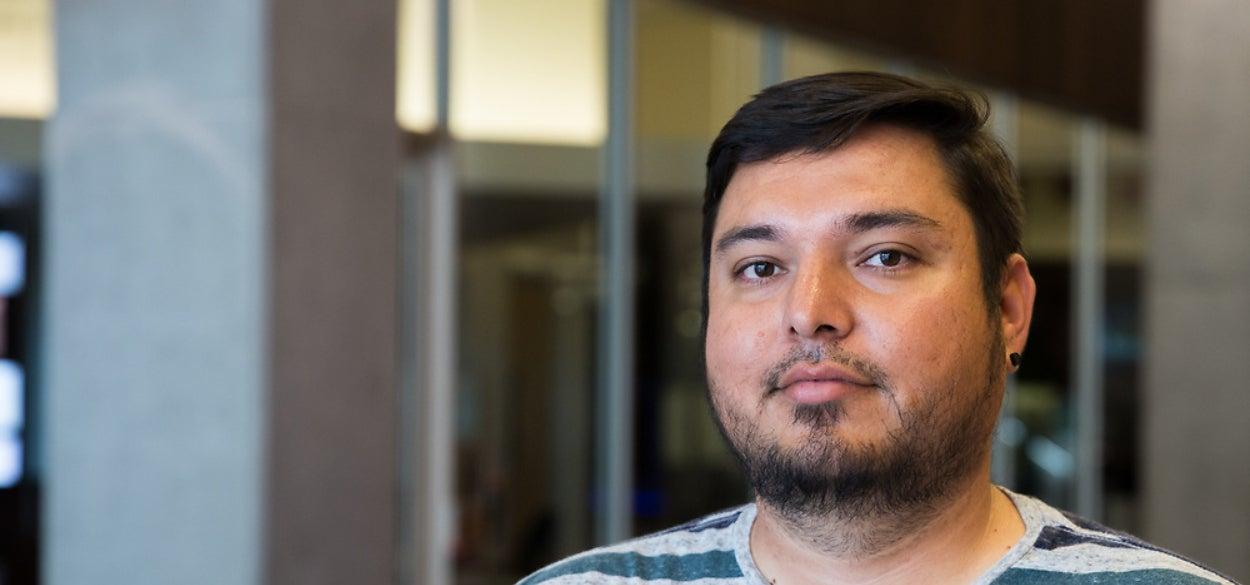
Researching how to transform urban areas to counteract carbon emissions
Eli Pérez-Ruiz, a graduate student in ASU’s School of Earth and Space Exploration, has travelled across the Sonoran desert to study variations in natural urban landscapes to learn how these variations affect carbon dioxide fluxes-- the carbon gas exchanged between ecosystems and the atmosphere.
His research is complex, so Pérez-Ruiz translates it into terms we understand too well; urbanization and climate change.
“When we build new urban settlements, we are replacing natural environment elements with built environments. Urban areas typically promote emissions of greenhouse gases and temperature increases,” says Pérez-Ruiz.
Constructing urban environments leads to a depletion in the natural plant life of that area. This vegetation would normally absorb CO2. Instead, the native plants are destroyed and more CO2 is emitted to the atmosphere.
Pérez-Ruiz doesn’t feel this is a reason to despair. Instead, he offers solutions to transform urban areas into environments that actually counteract greenhouse gasemissions. For example, adding green infrastructure and green areas in cities. His research is key to developing and implementing these concepts.
“If we understand how the different urban patches and urban elements interact with the surrounding environment, we can use that understanding to create more sustainable and healthy communities,” Perez-Ruiz says.
Pérez-Ruiz is a PhD candidate and a Fulbright-CONACYT fellow. His studies have taken him across the southwestern United States and Mexico; from Las Cruces, NM to Green Valley, AZ to his hometown in Sonora, Mexico. His research was recently published in a special edition about urban ecosystems in the scientific journal PLOS ONE. He attributes these accomplishments and the success of his research to the opportunities and inclusiveness that exist at ASU.
Pérez-Ruiz and his research are making an impact on understanding how cities both emit and capture carbon dioxide in their urban parks, roadways and neighborhoods. He knows other graduate students at ASU want to make an impact with their research as well. To them, he offers this advice, “Answer questions that help advance science about something important to you that hasn’t been done before. This will make the impact of your research meaningful.”
More stories from the Graduate Insider

Inside Graduate College’s Three Minute Thesis competition
When Aliyah Egan stepped onto the stage as a master’s student in last year’s Graduate College Three Minute Thesis (3MT) competition, she faced a challenge familiar to many researchers: explaining complex, specialized work to an audience with little or no background in her field.

Mentoring with intention: Strengthening graduate support at ASU
January is National Mentoring Month, a time to celebrate the impact mentoring can have and to reflect honestly on where gaps remain. At Arizona State University, mentoring is recognized as a critical component of graduate student success.

Graduate education is an adventure
About eighteen months ago, I set out on a journey walking the islands of the Dodecanese during a sailing trip in Türkiye and Greece with several friends. Along the way, I found winding paths, timeless villages and breathtaking views of sea and sky. That experience got me thinking about how adventure shows up in other parts of life, especially in learning.